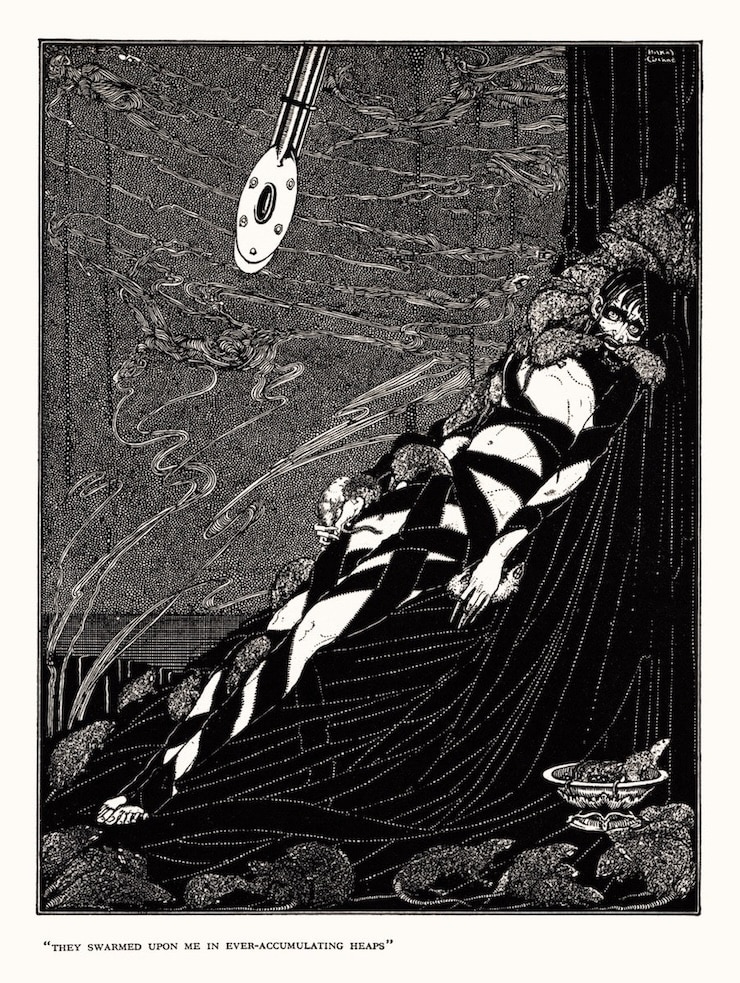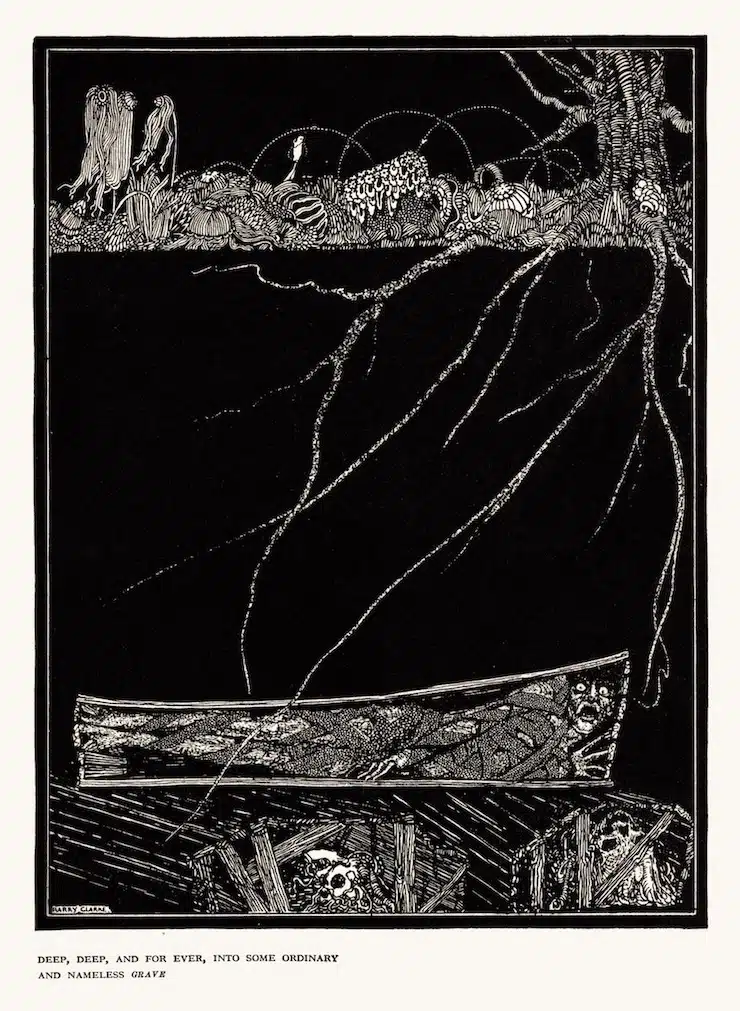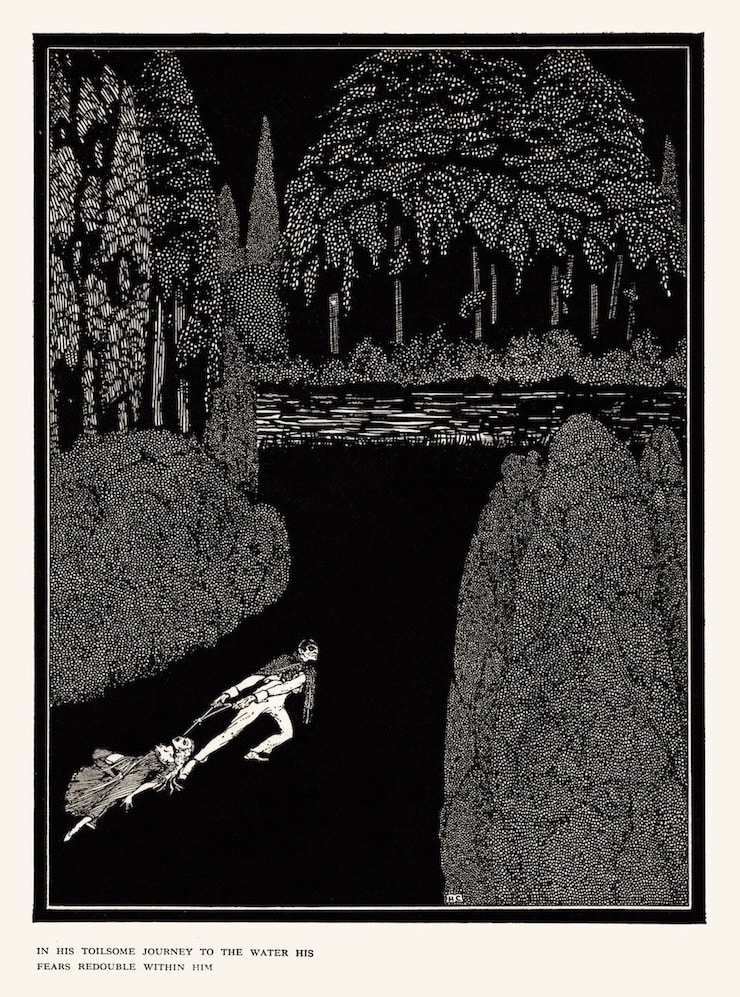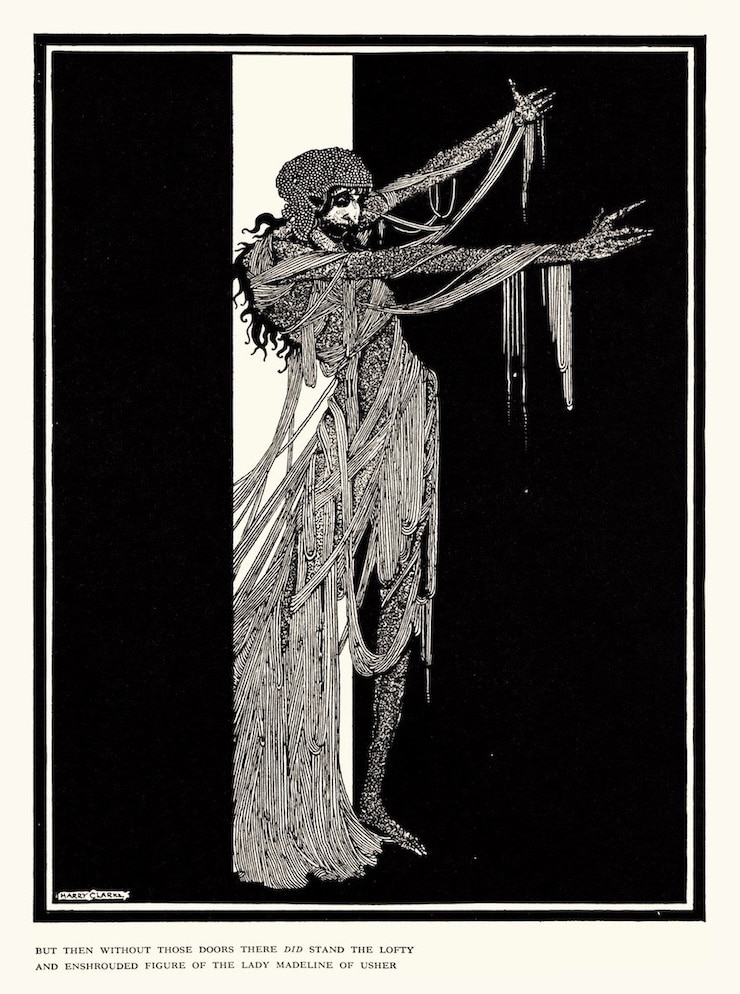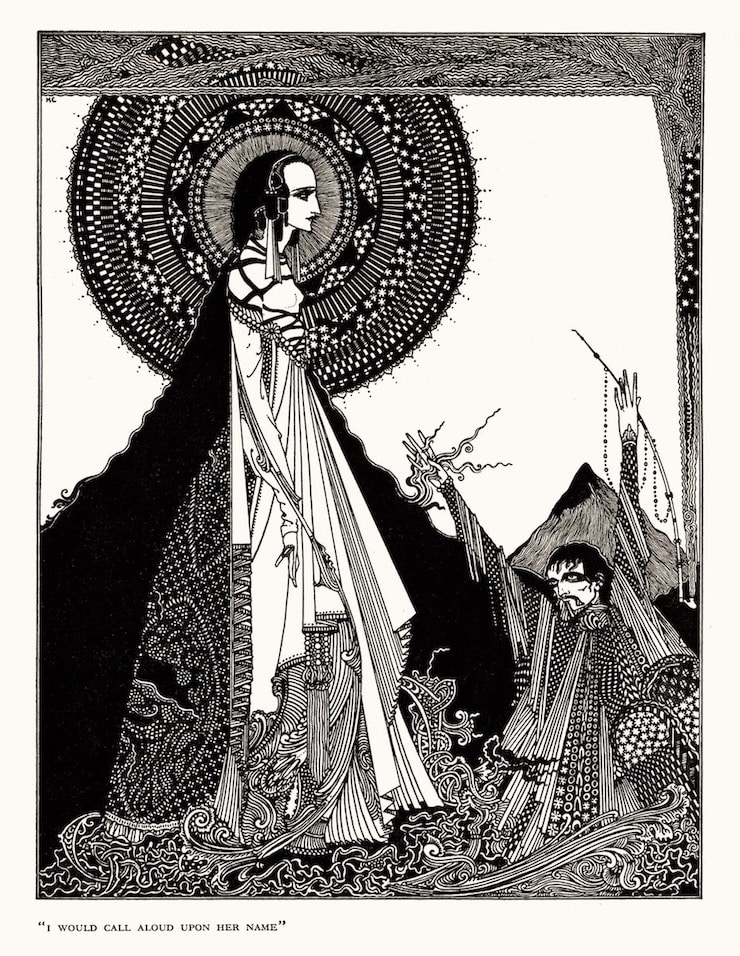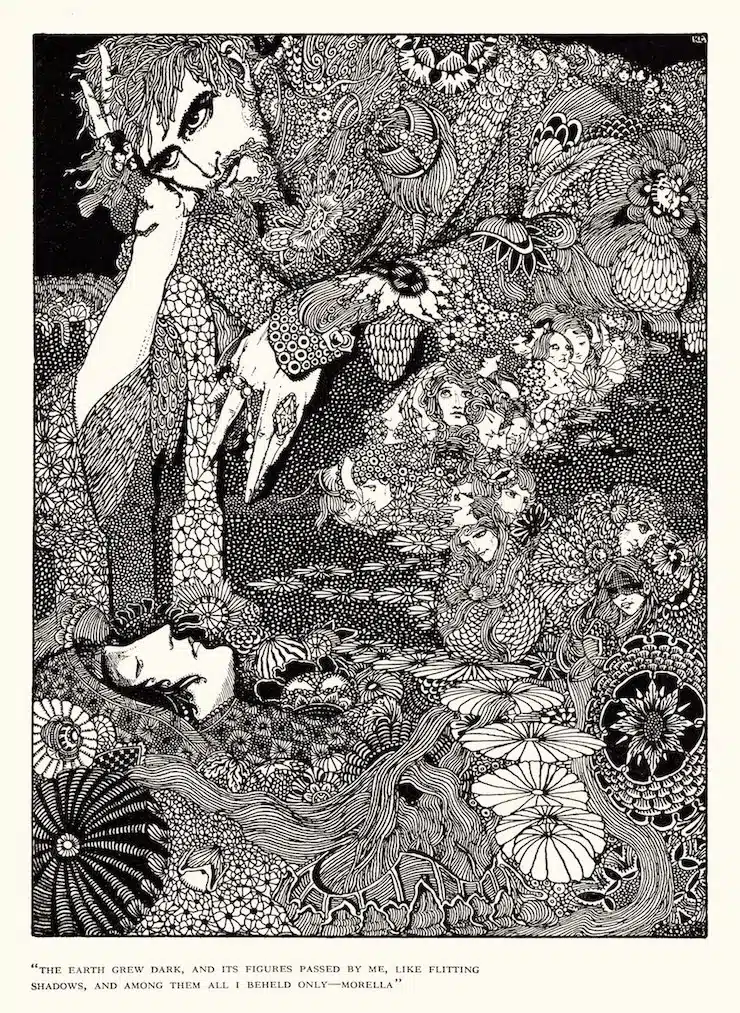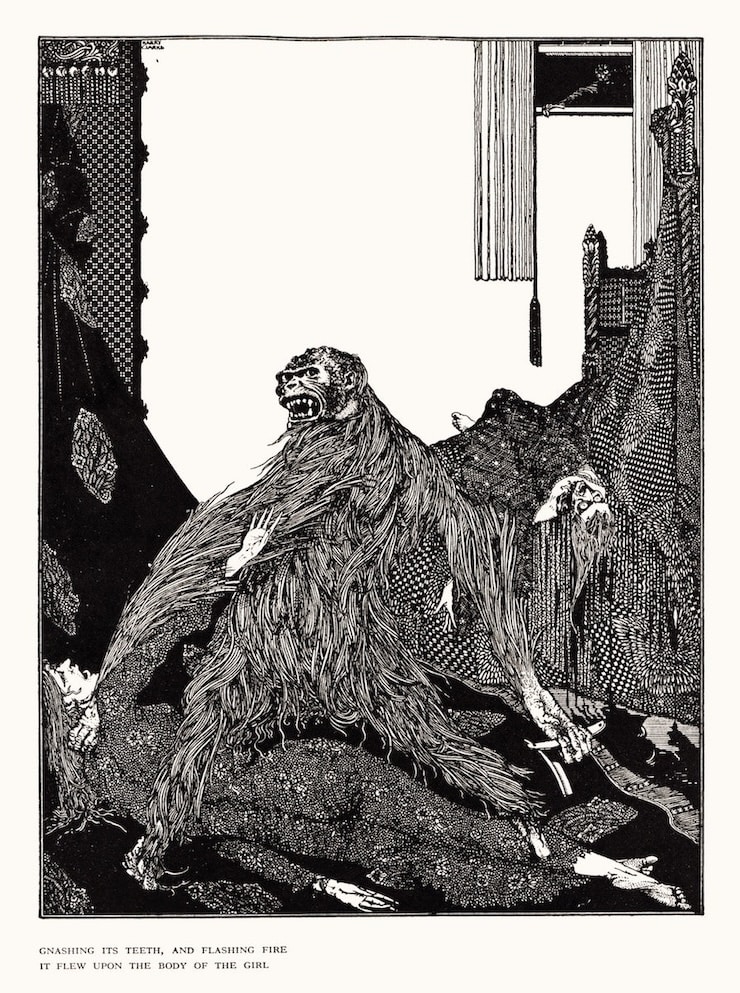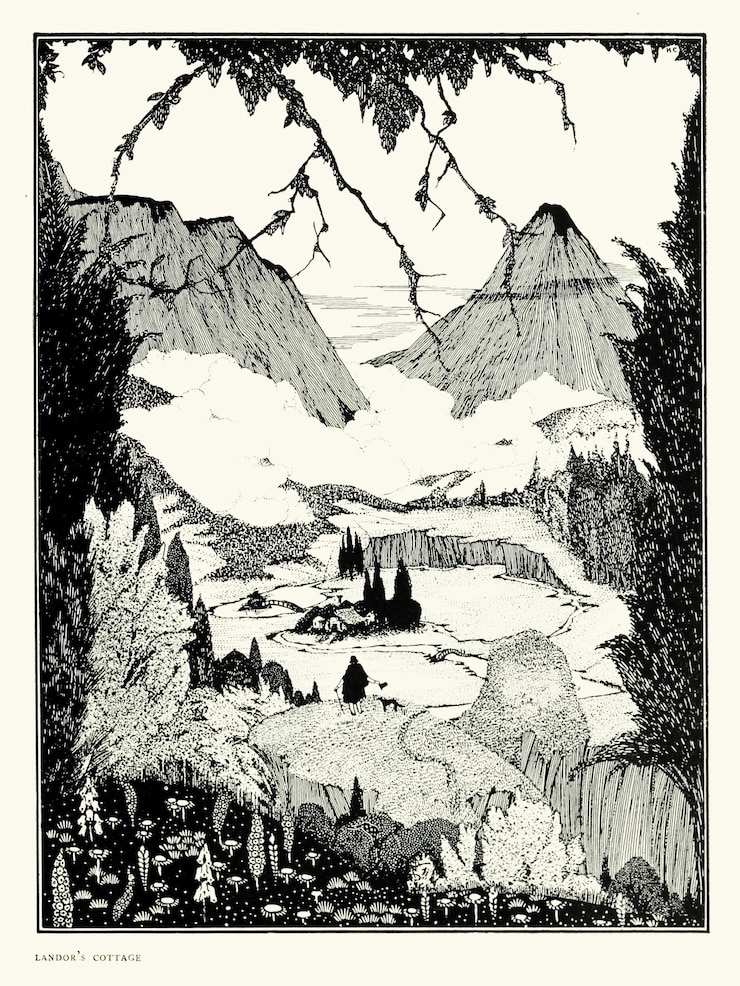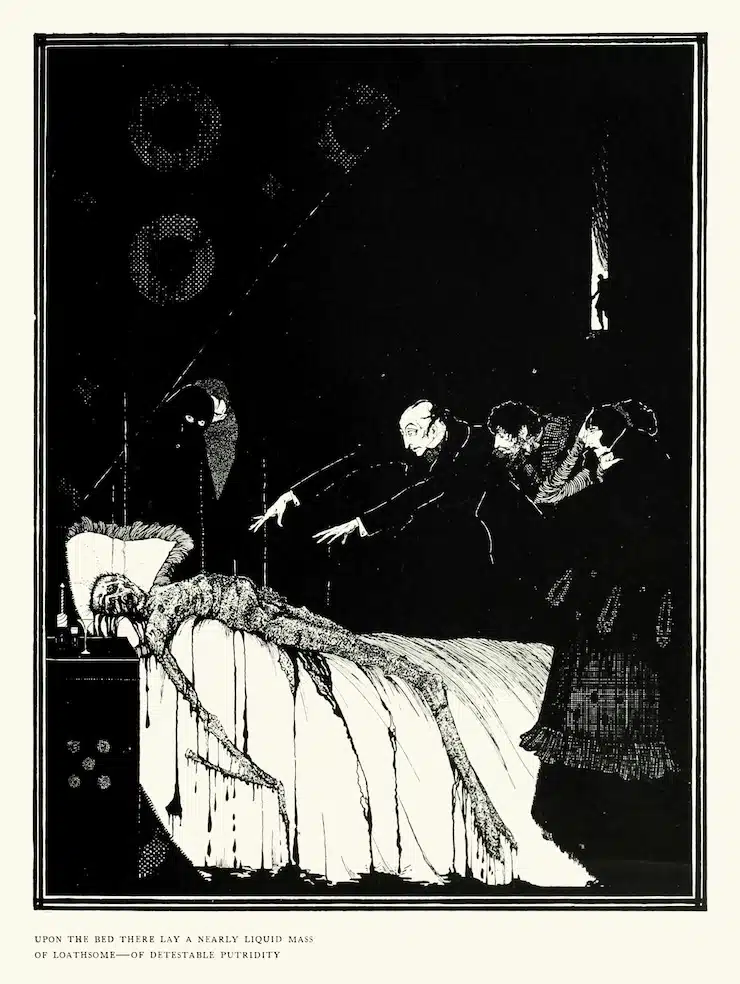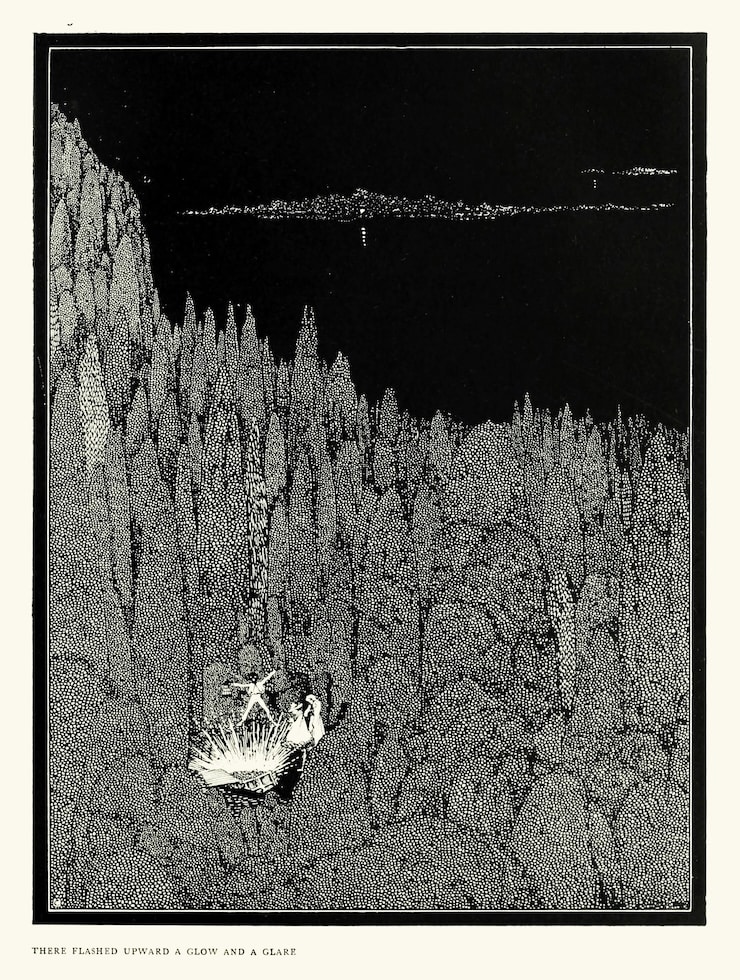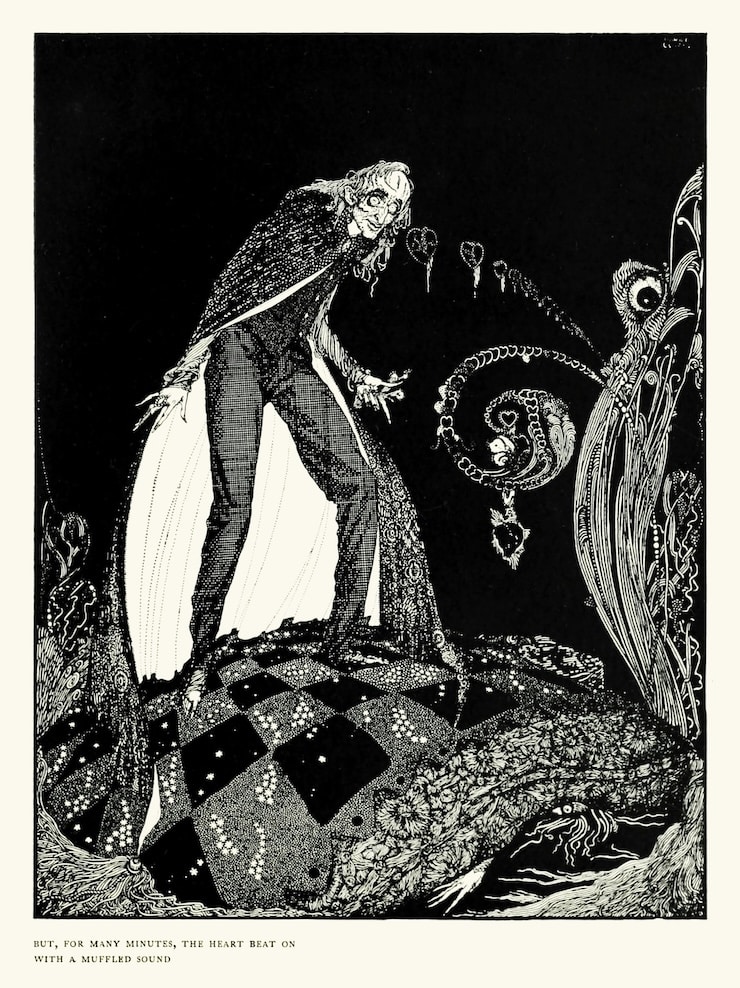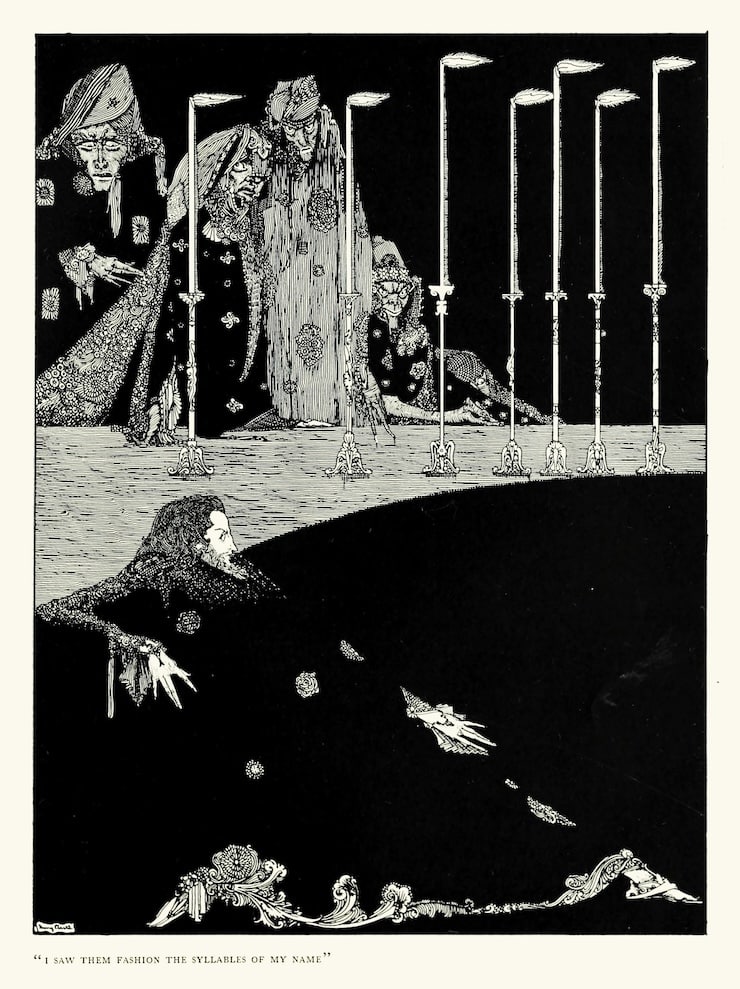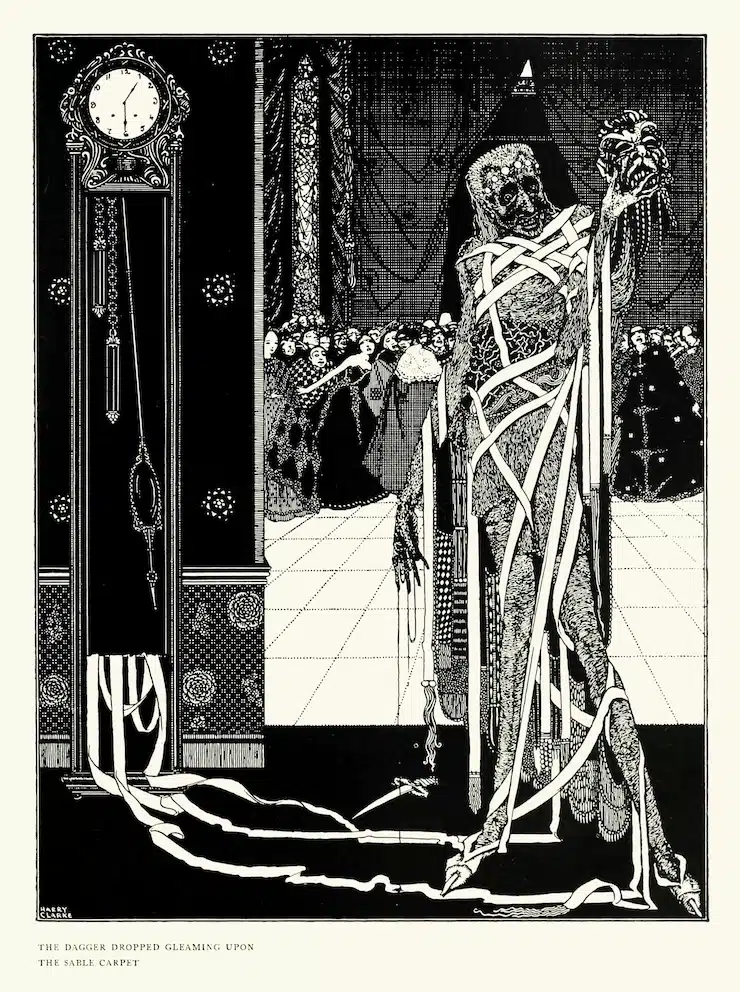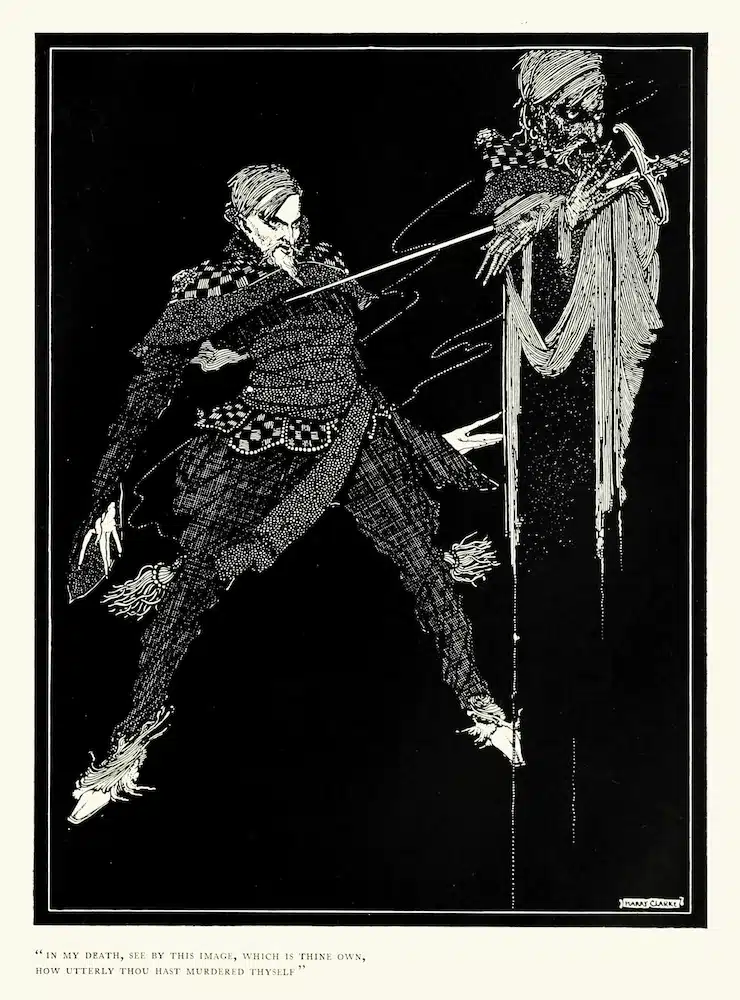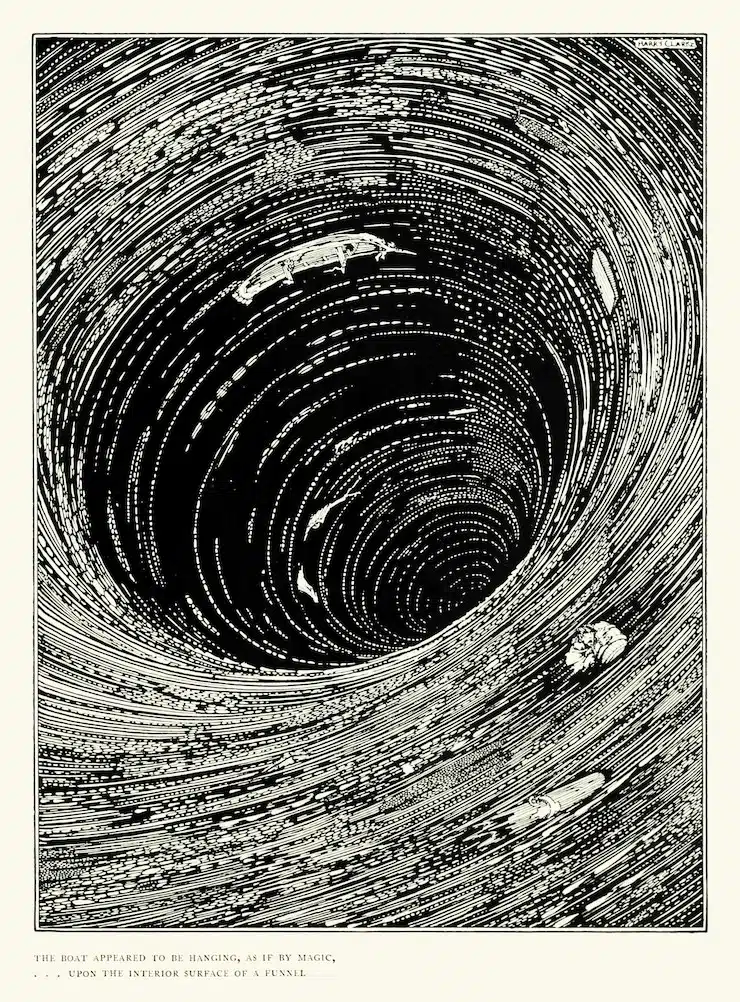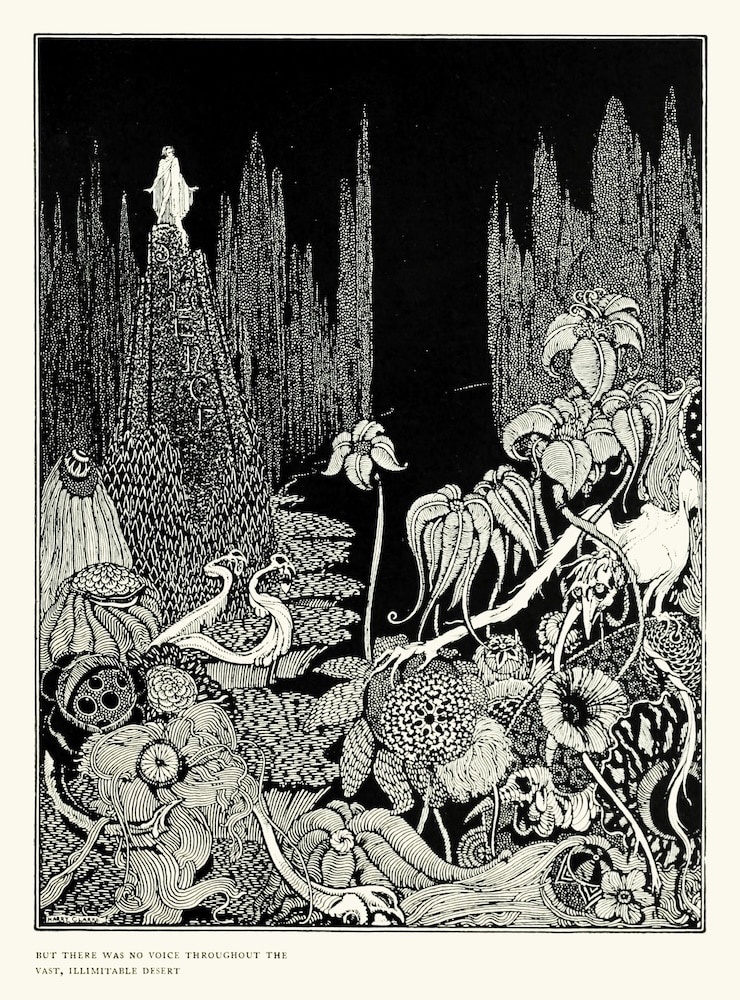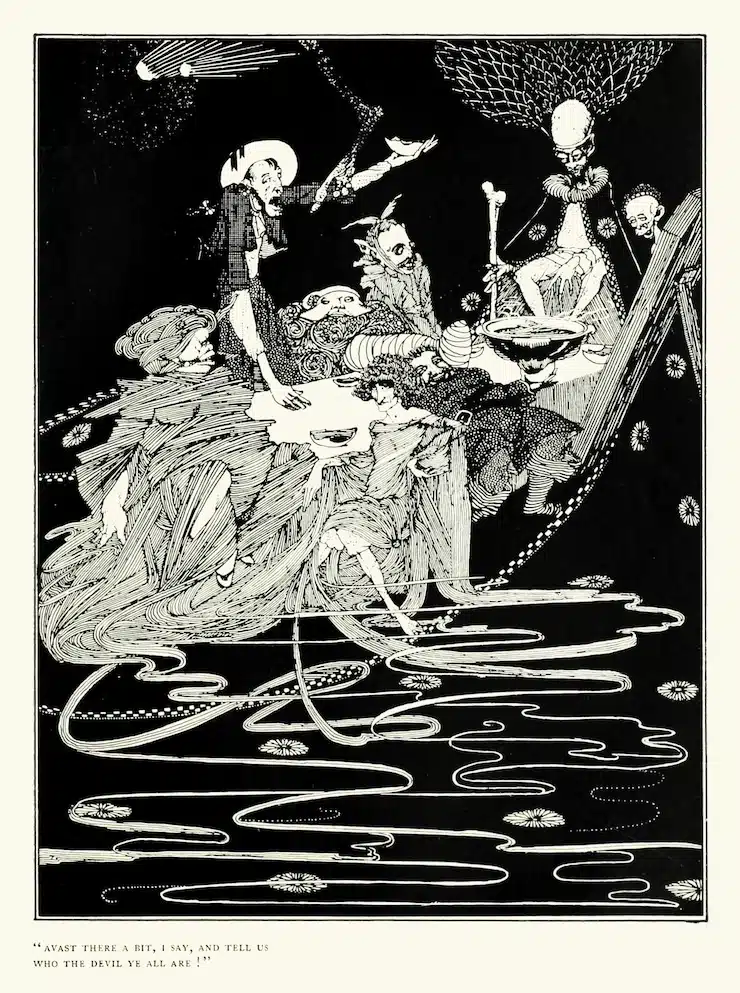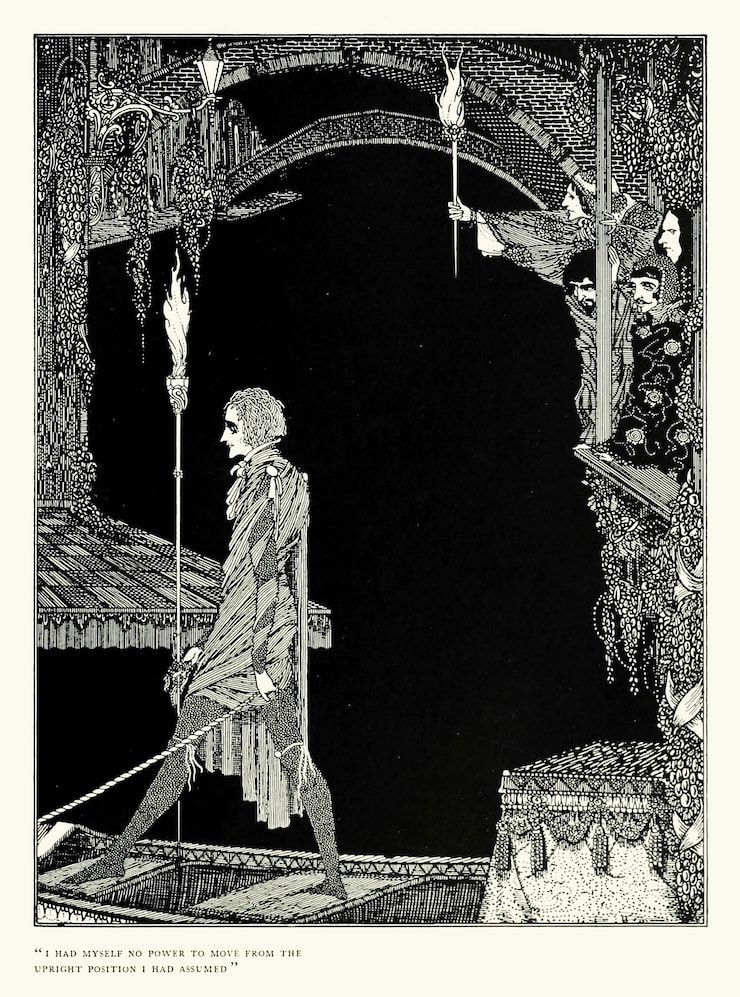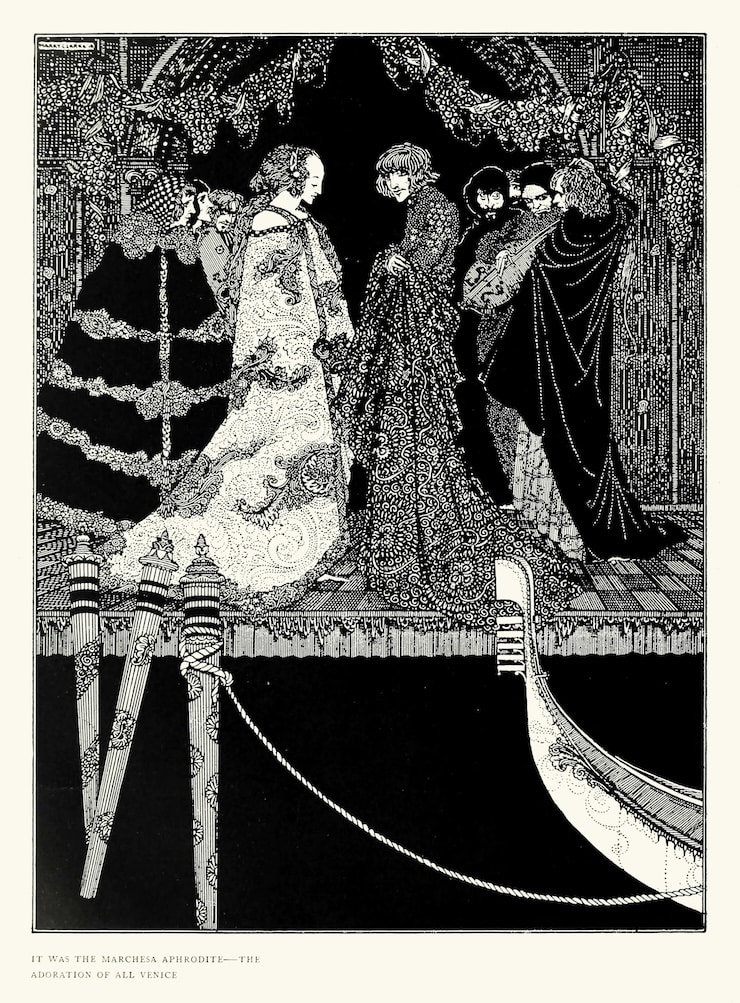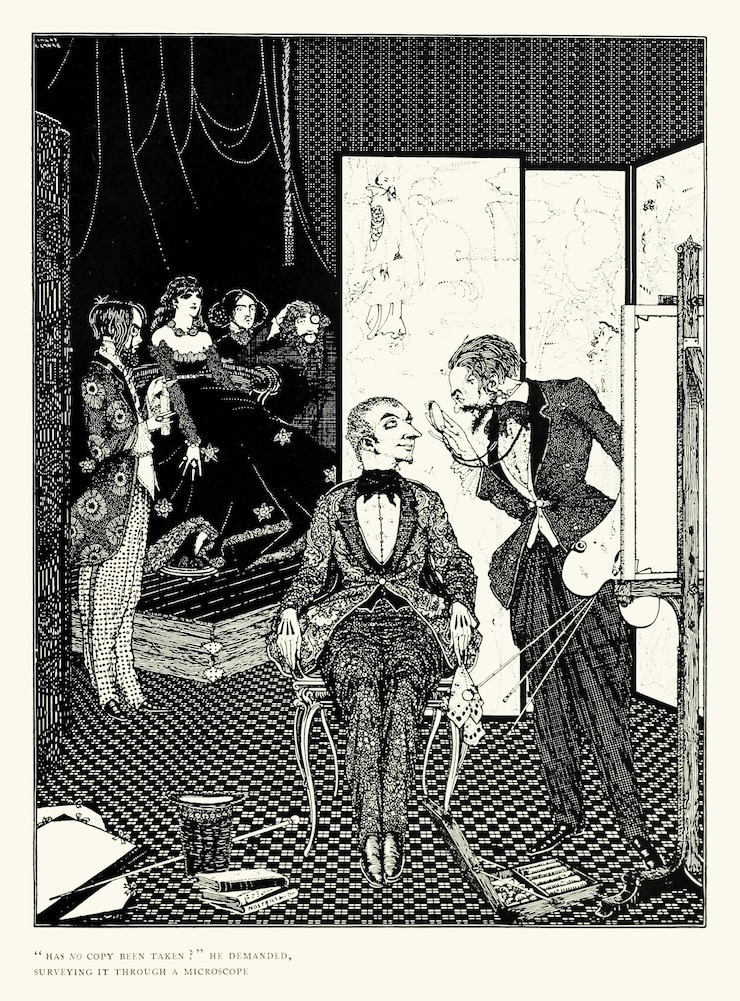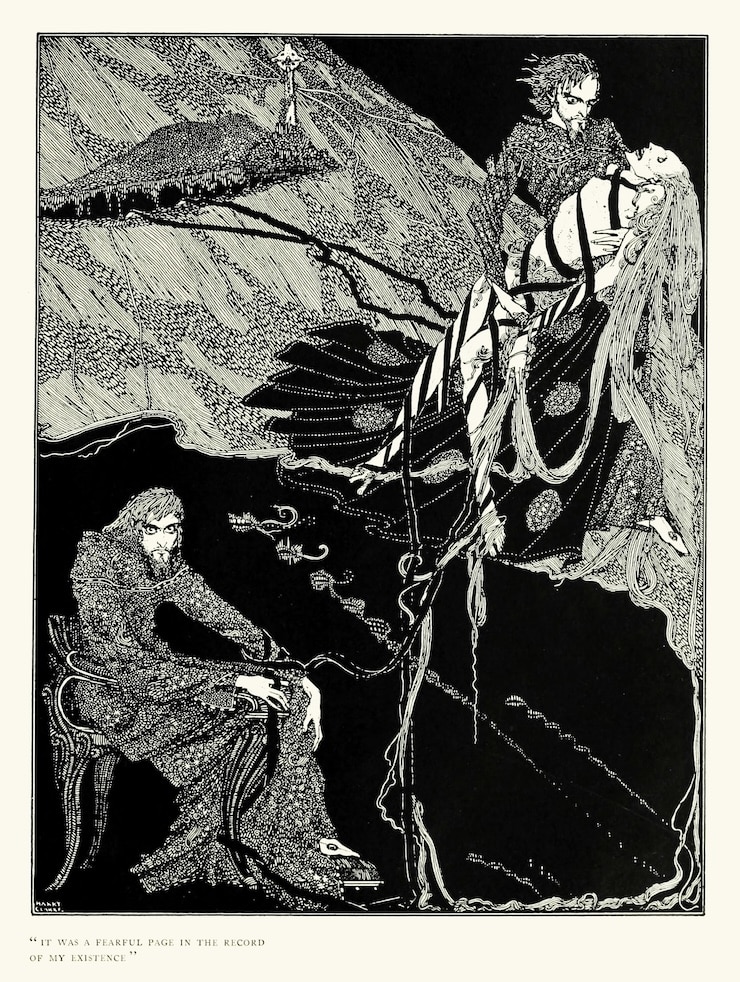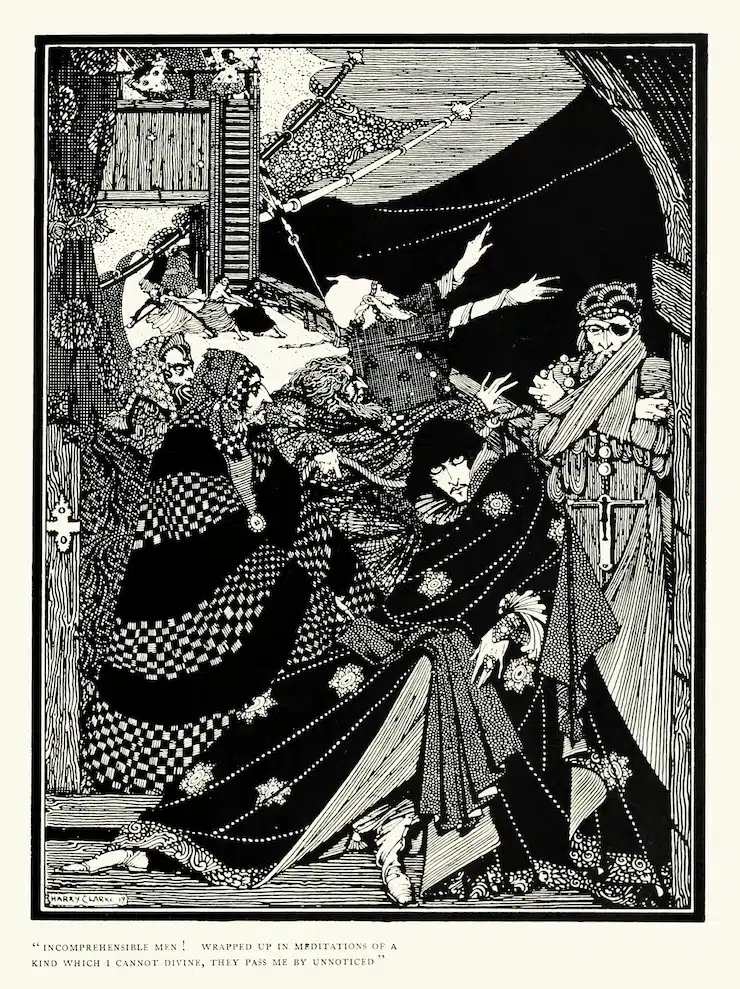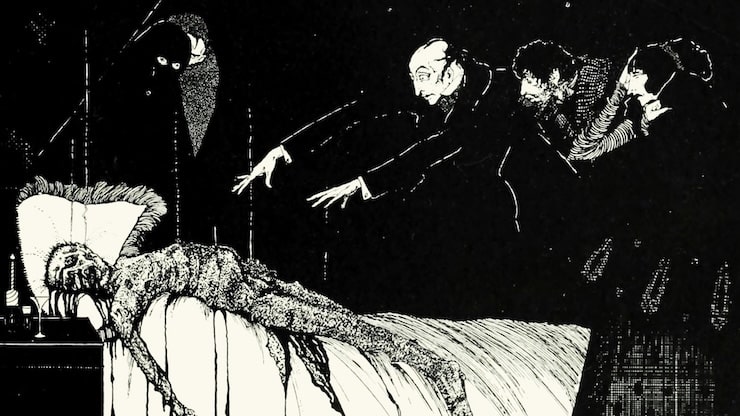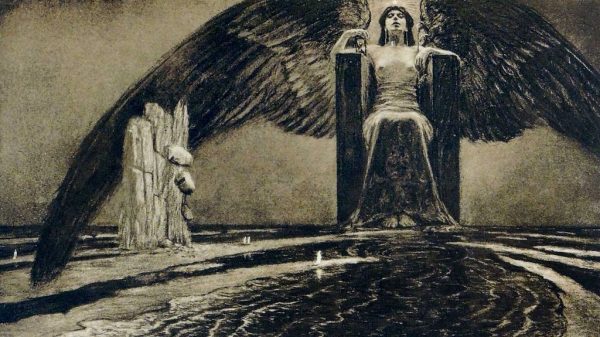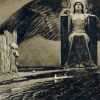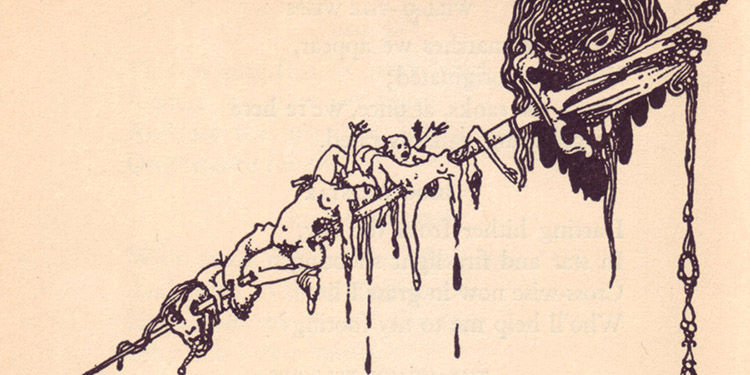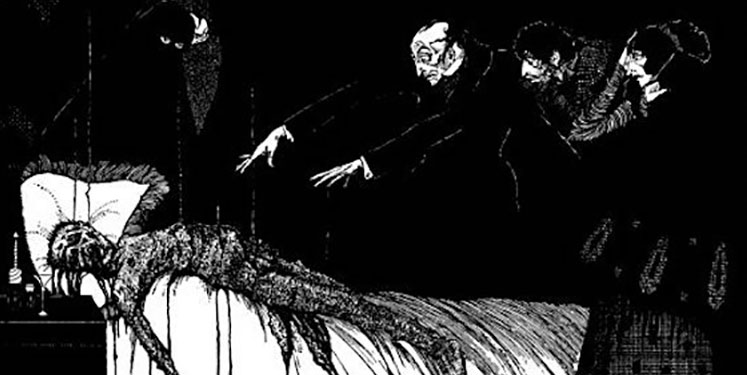I had some weird favorite books as a kid. There were three main books that I returned to time and again, and it was because of the artwork and imagery. One was National Geographic’s Journey Into China, which had amazing photos, architecture, and art that spanned 5,000 years of history. The next was a giant, white-leather-bound illustrated Bible that my secular parents got from some zealous relatives as a wedding present. It had amazing paintings of some of the Bible’s most violent and scandalous scenes. And my absolute favorite book, both because of the stories and the illustrations, was Hans Christian Andersen’s fairy tales illustrated by Harry Clarke. I would lose time staring at Clarke’s beautiful, colorful, fantastical illustrations, imagining the emotions, smells, and textures of each scene. Recently, I came across the illustrations he did for Edgar Allen Poe’s famous short story compilation Tales of Mystery and Imagination. These are just as riveting, and probably would have terrified and fascinated me as a kid. Check them out below while you listen to Tales of Mystery and Imagination…
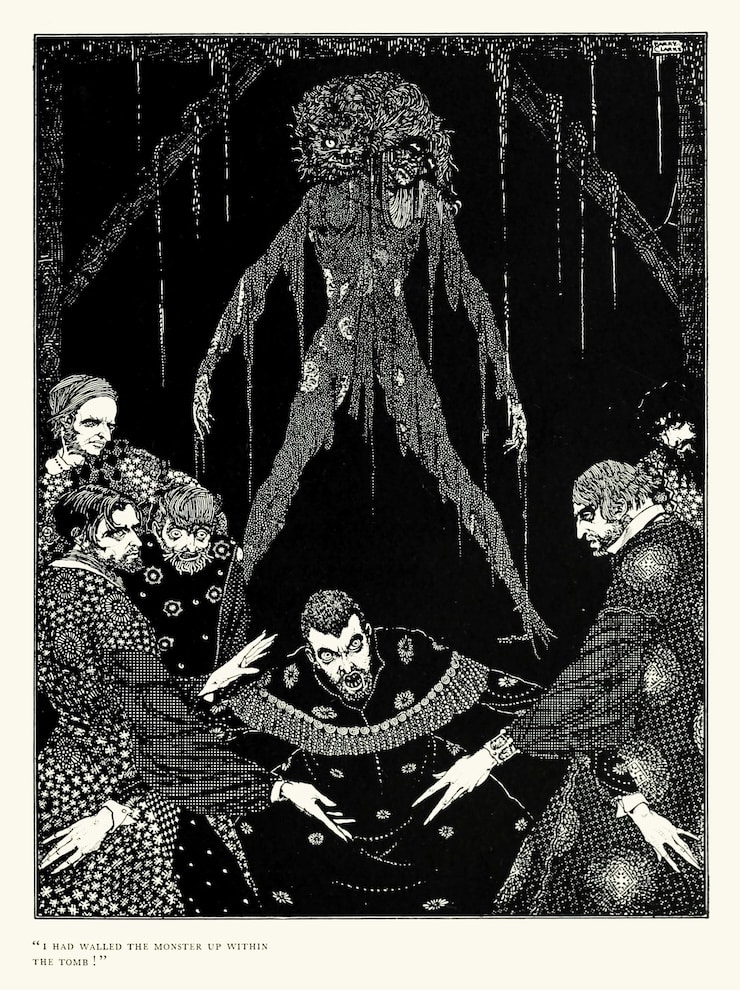
Poe’s Tales of Mystery and Imagination (1919) is a collection of some of Edgar Allan Poe’s most famous short stories, focusing on themes of horror, suspense, and the macabre. This anthology, originally compiled by Padraic Colum and later illustrated by Harry Clarke, brings together Poe’s eerie tales of psychological terror, the supernatural, and gothic mystery.
The collection includes classic stories such as “The Tell-Tale Heart,” where an unreliable narrator descends into madness after committing murder; “The Fall of the House of Usher,” a chilling tale of family decay and supernatural doom; and “The Black Cat,” which explores guilt, paranoia, and violence. Other notable stories include “The Pit and the Pendulum,” a harrowing depiction of psychological and physical torment, and “The Masque of the Red Death,” a dark allegory about inescapable fate.
